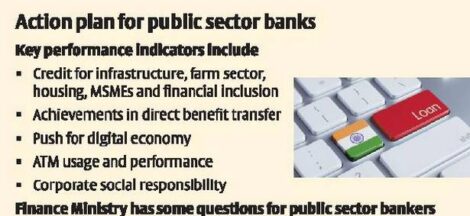MUMBAI: The Indian IT industry is expected to grow by 5.1 per cent to $282.6 billion in FY25, up from the 4 per cent growth in FY24. Nasscom, the industry body, said the sector was likely to surpass the $300 billion revenue milestone in FY26.
Though the growth rate remains in low single digits, the industry, which has been impacted by macro global headwinds, is slowly seeing an increase in year-on-year growth.
Nasscom President Rajesh Nambiar said the growth trajectory was on the right path. In FY24, growth was 4 per cent; in FY25, it is expected to be 5.1 per cent, and if the industry achieves the $300 billion target, the growth rate would be around 6 per cent.
The industry added 126,000 new jobs in FY25, which will take the overall employment to 5.8 million. While the industry body did not provide hiring targets for FY26, Nambiar said the industry would continue to expand its workforce.
“India’s tech skill intensity will be a critical driver of future growth. While the CEO outlook for FY26 remains measured yet positive, with increased tech and artificial intelligence (AI) spending, sustaining the growth momentum requires a strategic vision. However, upskilling in niche and core tech areas will continue to remain of paramount importance for the industry.”
Nambiar said the US market, which constitutes almost 60-62 per cent of the Indian IT services revenue, could be the biggest headwind for the sector due to the tariff threats made by President Donald Trump.
“If you were to look at the headwinds, the biggest unknown there would be the tariffs and the impact of what happens in the US market. It is a bit of a wild card at this point of time,” said Nambiar.
Infosys CEO and Managing Director Salil Parekh said if the measures taken by the US benefit US companies that should augur well for the Indian IT industry.
India’s digital economy, driven by sustained growth in domestic tech spending, outpaced export growth for the second consecutive year, with domestic tech revenues registering a 7 per cent annual increase from FY24. The momentum has been further propelled by the increased adoption of enterprise software and cloud solutions, alongside a 21 per cent growth in data centre capacity, driving increased investments.
The industry body also said AI was at an inflection point for the sector. Last year, 1 million employees were trained in AI, but in FY25, over 73,000 employees have advanced AI skills.
“The distinction between GenAI and all of AI is blurring. This is also accelerating what you can accomplish. When it comes to the demand side, we see it expanding quite a bit because the number of problems we can solve with AI has just expanded dramatically. Due to this shift we have to reimagine the supply side,” said Srikanth Velamakanni, vice-chairman, Nasscom and co-founder and group CEO of Fractal.
The export revenue for FY25 is expected to be around $244.4 billion, up 4.6 per cent year-on-year (Y-o-Y). The export revenue split is equal between global MNCs (including GCCs) and Indian service providers.
When it comes to proof-of-concept (PoC) to production, the report said 10-15 per cent of enterprise GenAI PoCs had moved into production-scale development.
As the industry enters 2025, CEO sentiment remains positive despite global headwinds, reflecting cautious optimism. Around 77 per cent of tech CEOs surveyed anticipate higher business growth, while 85 per cent of respondents expect client tech spending to be similar or higher in FY26 compared to FY25.
Sixty-three per cent of tech CEOs project AI investments to be higher than 10 per cent of their overall tech spending in FY26.
With AI becoming increasingly integrated into the workforce, 45 per cent of tech CEOs foresee a healthier hiring environment compared to FY25. However, skills will be key for new job creation.
Source: Business Standard




 Centre Kickstarts Process For Stake Sale In PSBs And Listed PFIs
Centre Kickstarts Process For Stake Sale In PSBs And Listed PFIs 